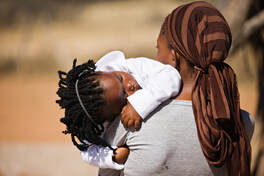
Gains made in preventing mother-to-child transmission of HIV could be reversed, with new HIV infections among children up by as much as 162% and setting the clock on AIDS-related deaths back to 2008, a modelling group convened by the World Health Organization and UNAIDS estimated. If no efforts are made to mitigate and overcome interruptions in health services and supplies during the COVID-19 pandemic, a six-month disruption of antiretroviral therapy could lead to more than 500,000 extra deaths from AIDS-related illnesses in sub-Saharan Africa in 2020–2021.
There are many different reasons that could cause services to be interrupted. In sub-Saharan Africa, an estimated 25.7 million people were living with HIV and 16.4 million (64%) were taking antiretroviral therapy in 2018. Those people now risk having their treatment interrupted because HIV services are closed or are unable to supply antiretroviral therapy because of disruptions to the supply chain or because services have simply become overwhelmed due to competing needs to support the COVID-19 response.
When treatment is adhered to, a person’s HIV viral load drops to an undetectable level, keeping that person healthy and preventing onward transmission of the virus. When a person is unable to take antiretroviral therapy regularly, the viral load increases, impacting the person’s health, which can ultimately lead to death. Disrupted services could also reverse gains made in preventing mother-to-child transmission of HIV. Since 2010, new HIV infections among children in sub-Saharan Africa have declined by 43%, from 250,000 in 2010 to 140,000 in 2018. Curtailment of these services by COVID-19 for six months could see new child HIV infections rise drastically.
It will be important for countries to prioritise shoring up supply chains and ensuring that people already on treatment are able to stay on treatment, including by adopting or reinforcing policies such as multi-month dispensing of antiretroviral therapy to reduce requirements to access healthcare facilities for routine maintenance and reducing the burden on overwhelmed healthcare systems.
When treatment is adhered to, a person’s HIV viral load drops to an undetectable level, keeping that person healthy and preventing onward transmission of the virus. When a person is unable to take antiretroviral therapy regularly, the viral load increases, impacting the person’s health, which can ultimately lead to death. Disrupted services could also reverse gains made in preventing mother-to-child transmission of HIV. Since 2010, new HIV infections among children in sub-Saharan Africa have declined by 43%, from 250,000 in 2010 to 140,000 in 2018. Curtailment of these services by COVID-19 for six months could see new child HIV infections rise drastically.
It will be important for countries to prioritise shoring up supply chains and ensuring that people already on treatment are able to stay on treatment, including by adopting or reinforcing policies such as multi-month dispensing of antiretroviral therapy to reduce requirements to access healthcare facilities for routine maintenance and reducing the burden on overwhelmed healthcare systems.

 RSS Feed
RSS Feed